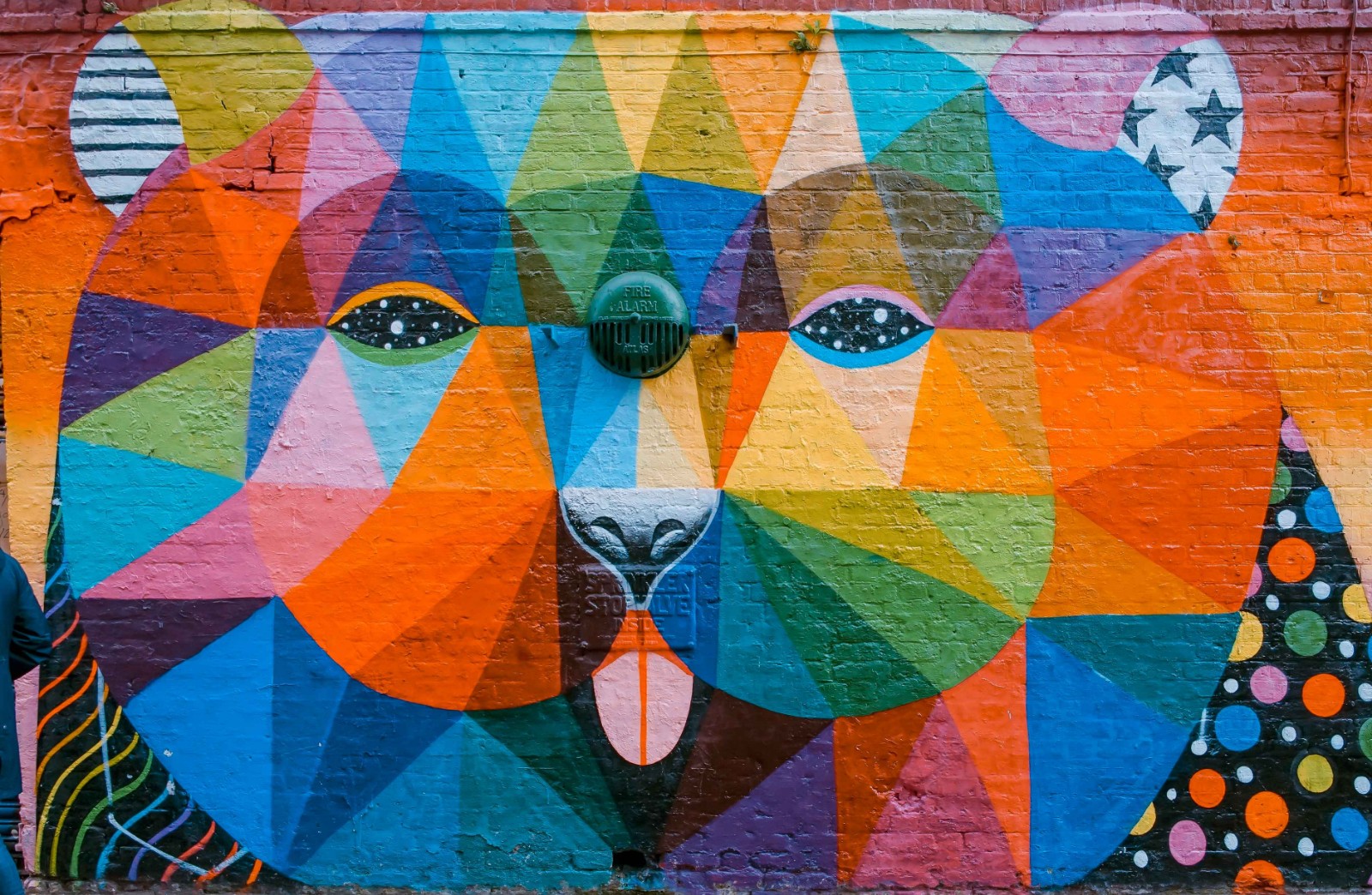How to guide children to appreciate the artist sample?
如何引导小朋友欣赏艺术家作品?

Firstly, what children will be attracted to?
小朋友会被作品中的什么东西所吸引?
1. The bright colors. Studies have shown that bright red, orange, pink, green are the color of children’s preference.
鲜亮的颜色。研究表明鲜亮的红色、橙色、粉色、绿色都是孩子较喜欢的颜色。
2. Color and form are in contrast, no nuances. (An exaggerated example: Lego)
颜色和形态对比鲜明,没有细微差别。(举个夸张的例子:乐高玩具)
3. Have stereo feeling, because "it looks like the real".
有立体感,因为“看起来像真的”。
4. Perform realistic things structure (cloth, hair, hair, etc.), vision and touch are very real.
逼真地表现事物结构(布匹,头发,毛发等),视觉和触觉方面都很真实。
5. Like the simple modeling(such as lady, babies, animals, etc.) and familiar places (such as home, garden, beach, etc.), so they like impressionist works very much.
喜欢简单模型(如女士、婴儿、动物等)和熟悉的场所(如家庭、花园、海滩等),所 以他们非常喜欢印象派的作品。
6. Describe movements and gestures, such as running, sleeping, lying down, tumbling,dancing, etc.
描绘动作和姿势,比如奔跑、睡觉、躺下、翻滚、跳舞等。
7. Direct feelings: happy, smile, angry, cry, surprised, etc , which can be attracted to them. 直
接的情感再现:开心、微笑、生气、哭泣、吃惊等都能吸引到他们。
8. The composition is simple, it will be best there’s only one protagonist.
简单的构图,最好只有一个主角。
Secondly, as a teacher or parent, what respect should we need to guide them?
作为教师或家长,需要从哪些方面引导?
1. Combine with daily life experience to understand;
结合日常生活经验理解;
Guide children to connect daily life experience, such as familiar scene, object, behavior and action. For example, mother leans forward and combed hair, father noses forward in the documents in the office; even some of the children feel the red quilt in the Van Gogh's painting is veryfamiliar with, because they have the same quilt.
引导小朋友联系日常生活的点滴——熟悉的场景、物体、行为和动作。例如从作品中联 想到,妈妈俯身向前梳头的姿态,爸爸在办公室里鼻子凑在文件上的样子;甚至有的孩 子觉得梵高作品里的红色被子很熟悉,因为他们家里面也有同样的被子。
2, Connect with his own body;
和自己的身体联系起来;
Children will not only satisfied with their eyes. Their whole body will be involved. They are easy to imitate by what they’ve seen, and describe them in action. In addition, we also need to guide children to find the right words to express their thoughts and feelings after seeing the artist sample, such as expressive image and sculpture are easier to inspire children to imitate.
小朋友不会只满足于用眼睛看画,整个身体都会参与其中。他们很容易模仿看到的画 面,并用动作描述出来。除此之外,我们还要引导小朋友找到合适的词语来表达自己看 到艺术作品后的想法和感受,如富有表现力的作品和雕塑比较容易激发孩子的模仿欲。
3. Give children freedom to judge;
给予小朋友自由评价的空间;
The children is very easy to create their own imaginary story in front of the painting,such as "she cried, certainly because..."This or that he had done before, "perhaps" and so on. Before the abstract painting, they often associate color, shape with specific object. They put the yellow spot as the sun, and the shape of fuzzy are considered to be the “banana” ”snake” or “moon”. A mass of green for adults may be meaningless, but in their eyes that will be a piece of green grass, or a jumping frog. Therefore, give them freedom to judge space and stimulate their curiosity is particularly important.
小朋友在作品前很容易自己虚构故事,如“她哭了,肯定是因为……”,“也许之前他做过 这个或那个”等等。在抽象作品前,他们经常会把颜色、形状和具体的物体联系起来。他 们把黄点当作太阳,有模糊边缘的形状认为是“香蕉”“月亮”“蛇”。一团绿色对成人来说 可能毫无意义,在他们眼里确是一片绿草,或者一只跳动的青蛙。因此,给他们自由评 价的空间,对激发他们的好奇心尤为重要。
4, Inspire children's imagination with words;
用言语激发小朋友的想象力;
No matter what children watching, we can stimulate their interest through some simple questions, such as "don't you think...", "what do you think of this?", "what's your impression or feeling of this?", "have you ever seen and imagined this thing?", "can find the most bright color?" . We can help them to understand some concepts by questions (such as light, dark, light, heavy, transparent-shade, strong-light, clear, fuzzy, rough, delicate, warm color cool color and so on) . It helps children understand the unique atmosphere of each artwork, this is a very good beginning.
不管小朋友在看什么,我们都可以通过一些简单的问答来激发他们的兴趣,如“你不觉 得……”,“你觉得这是什么?”,“这给你什么印象或感觉?”,“你见过和想象过这个东西 吗?”,“能从中找出最明亮的颜色吗?”。我们可以通过提问帮助他们了解一些概念(如 明—暗,轻—重,透明—遮挡,浓—淡,清楚—模糊,粗糙—细腻,暖色—冷色等)。 这有助于小朋友明白每幅作品的独特气氛,这是极好的开始。
5. A book is better than visiting a museum;
看书胜过参观博物馆;
For the smaller children (below 6years old), visiting the museum is very tired, their attention is easy distracted. By contrast, they prefer to read a book or look at the picture, sometimes reading becomes a game. For example, in a book about the Mondrian, includes red, yellow, blue three color painting, and three kinds of color appear and disappear in the book frequently, so that it becomes a story while children are looking for, waiting for, losing, meeting in the process. Only if the children prefer some sort of a painting, it’s time to take the children to see the real one in the museum, which it’s going to be a real date.
对于年龄较小的小朋友而言(6岁以下),参观博物馆是很累的,他们的注意力很容易被分 散。相比而言,他们更愿意看书或看图,有时阅读会变成一场游戏。例如在一本关于蒙 德里安的书中包含红黄蓝三色画,三种颜色在书中会反复出现和消失,这样在小朋友在 寻找、等待、失去、重遇颜色的过程中,它就成为了一个故事。只有当小朋友偏爱某幅 画或某类画时,再带他们去看真品,才会促成一场真正的约会。